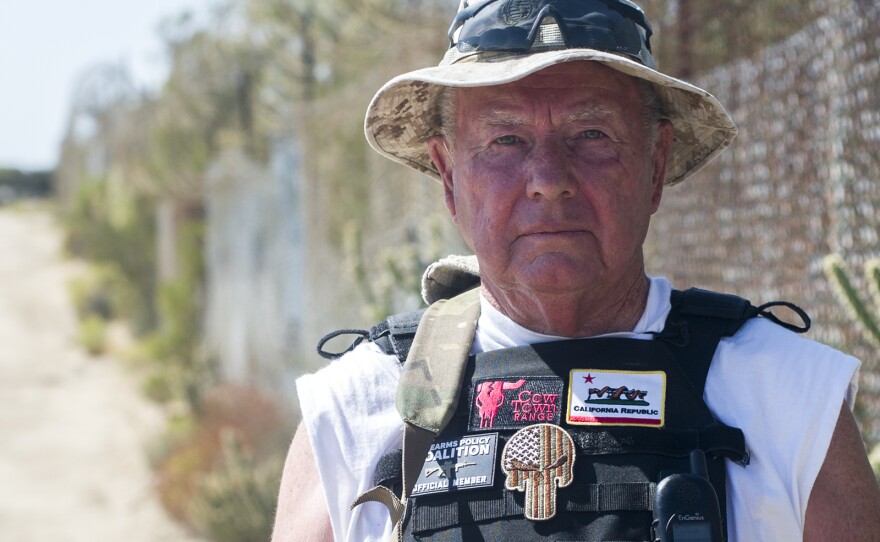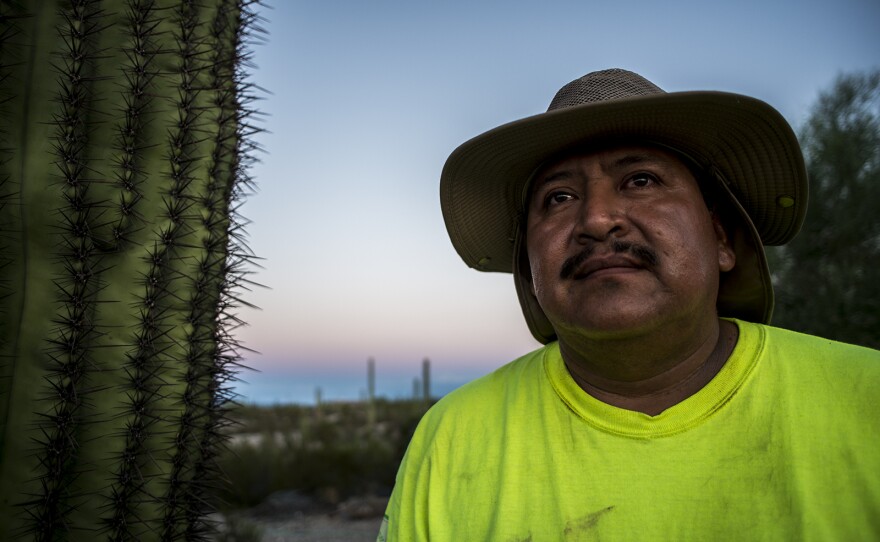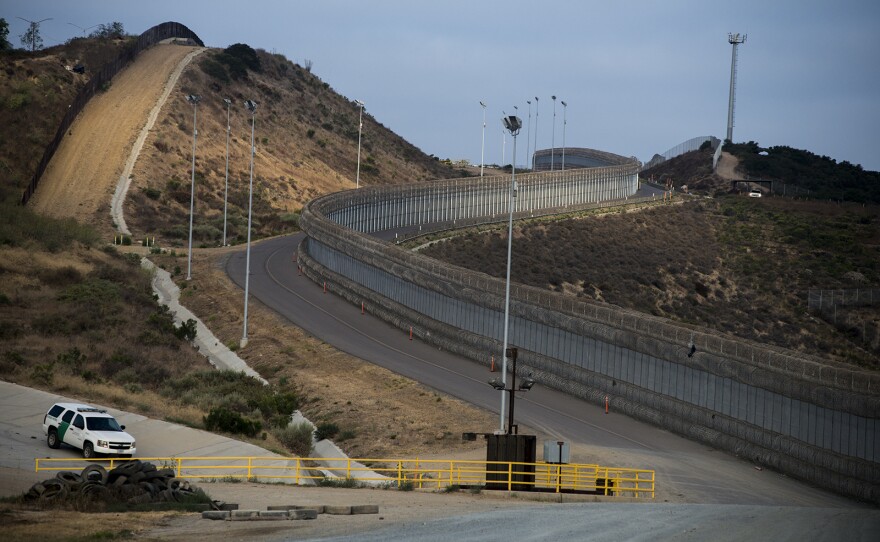One year since President Trump issued his executive order calling for the “immediate construction” of a new border wall, one has yet to materialize.
But there are components of the executive order that exist on a dirt patch of land in southeastern San Diego: eight prototypes of various colors and materials.
PHOTO GALLERY: Homeland Security Marks Completion Of Border Wall Prototypes
Each towers about 30 feet high — triple the height of the existing border fence just south of them, made of rusty corrugated steel.
It has been three months since they were unveiled, with acting deputy commissioner for U.S. Customs and Border Protection, Ron Vitiello, lauding their scale: “My biggest impression is how big they are."
Since, the prototypes have been tested for how effectively they resist climbing, tunneling and breaching. But the agency says it still can not comment on the results of those tests because they are still being evaluated.
U.S. Customs and Border Protection reported the prototypes have cost taxpayers $20 million dollars. But it's unclear if they’ll ever be used, because there’s still no money for the president's wall.
“He can't build the wall without Congress’ help. Congress has to authorize funding," said Gordon Hanson, an economics professor at UC San Diego.
In a meeting with Congress this month, Trump said he would protect those under the Deferred Action for Childhood Arrivals program — in exchange for the wall. But he rejected a bipartisan deal that included $1.6 billion for the wall, saying it wasn’t enough. He’s asked for $18 billion over 10 years.
Hanson said Trump is unlikely to get that money from Congress, and even less likely to get it from Mexico, as he initially promised.
“There's so much opposition in Congress to it, not just Democratic lawmakers but Republican lawmakers too," he said. "There is tremendous opposition to this in Mexico, and Mexico is entering a year in which it's going to have a historic presidential election.”
SPECIAL PROJECT: America's Wall: Decades-Long Struggle To Secure US-Mexico Border
In Mexico, Trump’s policies on everything from immigration to trade have stoked resentment against the U.S., helping to empower the country’s own populous candidate. Andrés Manuel López Obrador appears less willing to cooperate with the U.S. than any Mexican president in recent history.
The prospect of the wall has inspired several artistic protests, such as a billboard-size image of a little boy peeking into the U.S. over the fence. More recently, artists projected light graffiti onto the prototypes from Mexico, including an image of a ladder, the Statue of Liberty and a caption saying 'Refugees Welcome Here.'

Jill Holslin showed us where she and other artists set up in the poor Mexican neighborhood Las Torres, which is located directly on the other side of the existing border fence. Here, stacks of tires form steps for people to climb into the U.S. Holslin said a taller wall would be a futile expense because it would just lead to taller ladders.
“The border wall is absolutely against the core foundational values of the United States," she said. "The core foundational values of the United States have been built upon immigration, upon welcoming refugees, upon creating a society that’s very diverse.”
But some continue to await the wall with hopeful anticipation. One of those people is Bob Maupin, a retired mechanic whose property touches the border in southeastern San Diego County.
He patrols his property for trespassers from Mexico with an AR-10 rifle slung over his shoulder and calls himself a vigilante.
“If we get a wall like they built in Israel, I probably won’t have to wear a bullet-proof vest along the border anymore," he said.

Along the southern edge of his property, he built a chain-link fence that runs parallel to the government’s border fence. He says the government fence is pretty useless because it’s so easy to climb, standing only 10 feet tall here.
“It is my duty to protect the country from people invading it," he said.
Further east, in the Arizona desert, another man searches for people who get lost illegally crossing the border, and tries to save them. Here, it’s nature that stops people from coming through.
Hundreds die each year from the extreme temperatures. Often, Ely Ortiz recovers their bodies, with the help of a group named Aguilas del Desierto, or Eagles of the Desert.
“When I receive a call from a mother crying, begging me for help, that her son or husband is lost – my soul breaks, and I say, I have to keep doing this," Ortiz said.

He said the existing wall is to blame for the deaths, because it has pushed migrants into the desert.
“The wall is a method of discrimination. It’s a way of saying, you’re inferior to me and here I am marking my territory… the United States, with its policies, how many lives has it claimed?”
Ortiz believes a longer wall will mean more deaths and won't stop people from coming through.
While views on the wall vary as widely as Ortiz and Maupin — two men who patrol the border for very different reasons — the question of whether the wall will ever be built depends on Congress.






